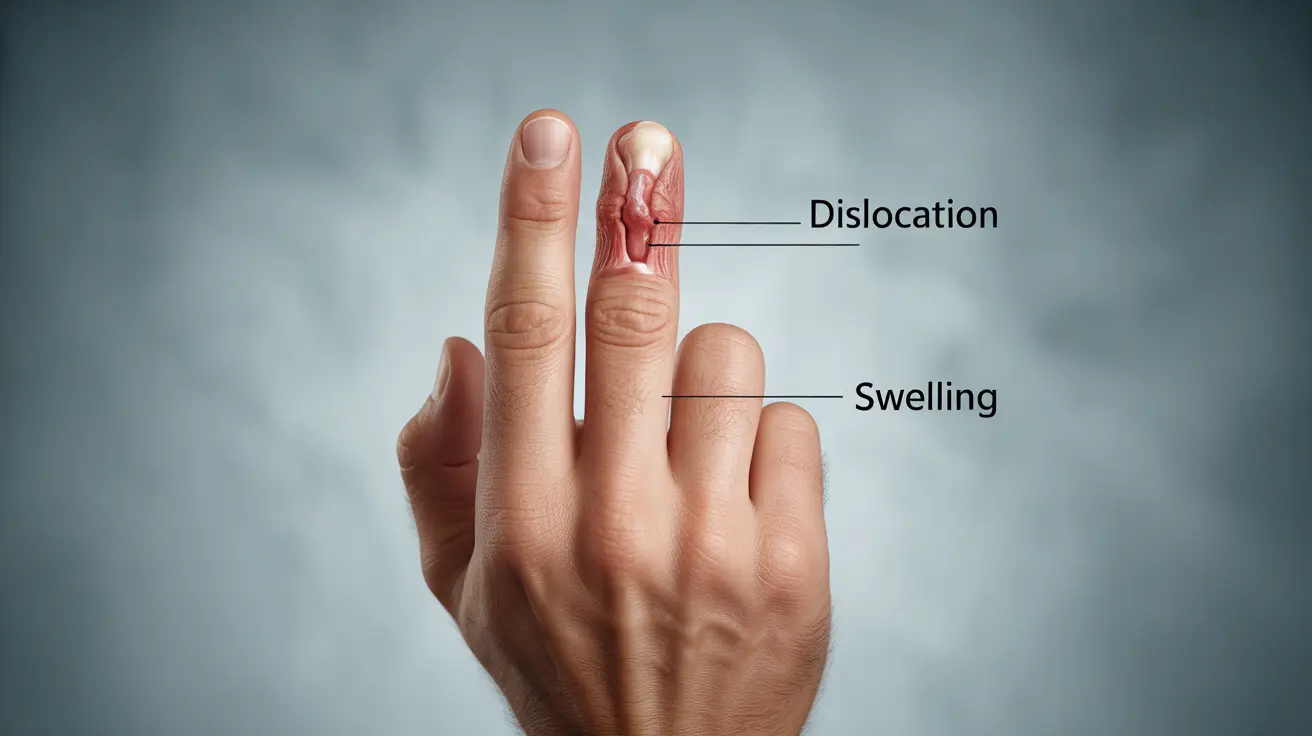A dislocated finger occurs when the bones of your finger are forced out of their normal position at a joint. This painful injury commonly happens during sports activities, falls, or accidents. Understanding the signs, proper treatment, and recovery process is crucial for preventing long-term complications and ensuring optimal healing.
While a dislocated finger might seem like a minor injury, prompt medical attention is essential to prevent permanent damage to the surrounding tissues, ligaments, and blood vessels. This comprehensive guide will help you understand what to do if you experience this injury and how to support proper healing.
Signs and Symptoms of a Dislocated Finger
Recognizing a dislocated finger quickly can help ensure you get the appropriate care. Common indicators include:
- Visible deformity or crooked appearance
- Severe pain at the joint
- Immediate swelling and bruising
- Limited or impossible movement
- Numbness or tingling
- Cold or discolored fingertip
The severity of symptoms can vary depending on which joint is affected and the force of the injury. Some dislocations may also involve additional injuries like fractures or ligament tears.
Common Causes and Risk Factors
Understanding what leads to finger dislocations can help prevent future injuries. The most frequent causes include:
- Sports injuries, especially in basketball and volleyball
- Falls onto an outstretched hand
- Workplace accidents
- Direct impact or trauma to the finger
- Motor vehicle accidents
High-Risk Activities and Prevention
Certain activities put you at higher risk for finger dislocation. Taking preventive measures can help reduce your risk:
- Wear appropriate protective gear during sports
- Use proper technique when catching balls
- Maintain safe workplace practices
- Exercise caution during activities requiring hand coordination
- Keep walkways clear to prevent falls
Immediate Treatment Steps
If you suspect a dislocated finger, take these important initial steps:
- Remove any rings immediately before swelling increases
- Apply ice to reduce swelling
- Immobilize the finger in its current position
- Seek immediate medical attention
- Avoid attempting to relocate the finger yourself
Professional medical evaluation is crucial as improper treatment can lead to chronic problems and decreased finger function.
Medical Treatment Options
Treatment approaches vary depending on the severity and location of the dislocation:
Non-Surgical Treatment
- Reduction (repositioning of the joint)
- Splinting or buddy taping
- Pain management
- Physical therapy exercises
Surgical Intervention
Surgery may be necessary in cases involving:
- Severe ligament damage
- Associated fractures
- Failed closed reduction
- Chronic instability
Recovery and Rehabilitation
The healing process typically involves several phases:
- Initial immobilization (1-2 weeks)
- Gentle range of motion exercises
- Gradual strengthening activities
- Return to normal activities (6-8 weeks)
Following your healthcare provider's instructions and completing prescribed exercises is crucial for optimal recovery.
Frequently Asked Questions
- What are the common causes and symptoms of a dislocated finger?
A dislocated finger is commonly caused by sports injuries, falls, or direct trauma. Symptoms include visible deformity, severe pain, swelling, limited movement, and possible numbness or tingling in the affected finger.
- How is a dislocated finger usually treated, and what are the options if surgery is needed?
Initial treatment typically involves reduction (repositioning) of the joint and splinting. If surgery is needed due to severe damage or failed conservative treatment, options include ligament repair, joint reconstruction, or internal fixation for associated fractures.
- What steps should I take immediately if I suspect I have a dislocated finger?
Remove any rings, apply ice, immobilize the finger, and seek immediate medical attention. Don't attempt to relocate the finger yourself, as this could cause additional damage.
- What are some common complications of a dislocated finger, and how can I prevent them?
Complications can include chronic pain, stiffness, arthritis, and decreased range of motion. Prevention involves proper protective gear during sports, following safety guidelines, and ensuring complete rehabilitation after injury.
- How long does it typically take for a dislocated finger to fully heal, and what are some tips for recovery?
Full healing usually takes 6-8 weeks. Recovery tips include following medical advice, completing prescribed exercises, gradually increasing activity levels, and protecting the finger from re-injury during healing.




